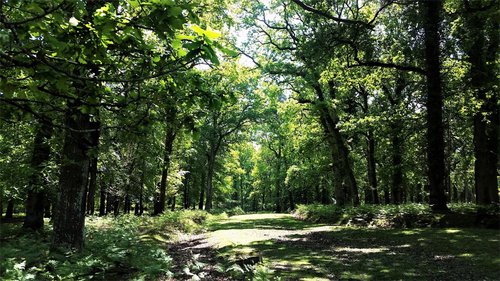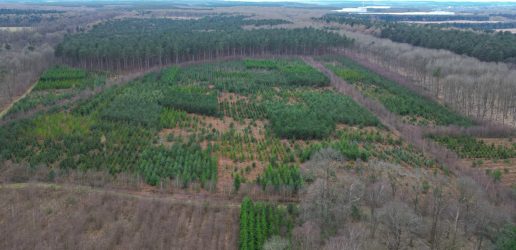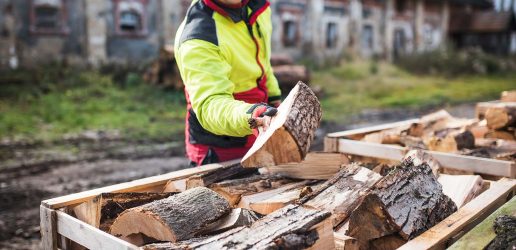
Diseases affecting different UK tree species have been shown to have a multiplying effect on the loss of associated biodiversity, new research by James Hutton Institute and partners in the UK and Portugal including Forest Research, has found.
In a study published in the latest issue of the Journal of Ecology, the research team reveal that the decline of ash and oak trees may affect more species than just the ones that only use oak or only use ash as their habitat.

In the UK, the common ash hosts 45 species that are only found on ash trees, and sessile and pedunculate oaks host 326 species that are only found on oak trees. However, an additional 141 species use ash and oak as alternative habitats and depend on these two tree species only. If both ash and oak were to be lost, the number of species at risk would rise to 512.
Lead author of the study Dr Ruth Mitchell, an ecologist at the James Hutton Institute, said: “When a plant pest or pathogen kills a plant, particularly when it results in the wide-spread loss of one plant species, it also impacts on those species such as insects, mosses, lichens, mammals, birds and fungi that use that plant species for feeding, for nesting or as a living space. “
Impacts on woodland
This work shows that such impacts may be considerable, particularly if multiple host plants are lost that support the same biodiversity, as is the case with the number of different diseases currently impacting the UK’s trees.
Many species use ash, oak and other tree species and thus should be resilient to the loss of ash and oak as they can use other tree species.
However, when the researchers looked at 24 mixed ash and oak woodlands within the UK, they found that only 21% of the sites were able to continue to support species that use ash and oak if ash and oak were lost. This was because the other tree species that would support this biodiversity were not present at the site, although the site conditions were often suitable for them to grow.
The authors suggest that in risk assessments, the wider ecosystem should be considered. Higher impact scores should be given to new pests and pathogens whose hosts occupy the same ecosystem as other host plant species already impacted by pests and pathogens.
Increasing resilience
The work provides further support for a major theme in recent guidance on sustainable forestry, which advocates that species diversity of multipurpose and conservation woodlands should be increased to enhance their resilience.
Defra Chief Plant Health Officer, Professor Nicola Spence, commented: “This work reiterates the importance of protecting our native trees. It confirms that the value of our interconnected ecosystems is often more than may immediately meet the eye, and the importance of intelligent woodland management plans to support resilience. Such combinatorial analysis is beneficial to our understanding and further development of available ‘toolkit’.”
Paper: Mitchell, Ruth J; Bellamy, Paul E; Broome, Alice; Ellis, Chris J; Hewison, Richard L; Iason, Glen R; Littlewood, Nick A; Newey, Scott; Pozsgai, Gabor; Ray, Duncan; Stockan, Jenni A; Stokes, Victoria; Taylor, Andy FS. Cumulative impact assessments of multiple host species loss from plant diseases show disproportionate reductions in associated biodiversity. Journal of Ecology. DOI: 10.1111/1365-2745.13798.
Recent News
View All news
Seventeen coniferous tree species show early promise for future commercial timber production in the UK
Researchers have set up a network of nine large scale experiments across the UK to test the suitability of 17 tree species as potential alternatives for future commercial timber production.
Forest Research are looking for people involved in the harvesting, processing, transport, import, or trade of firewood in Scotland to complete an important survey.

New guide to help local authorities conduct a people survey on the social value of their treescapes
A new step-by-step guide to help local authorities, charities and civic societies carry out a people survey to understand social and cultural values related to trees in their area, is now available.

Seventeen coniferous tree species show early promise for future commercial timber production in the UK
Researchers have set up a network of nine large scale experiments across the UK to test the suitability of 17 tree species as potential alternatives for future commercial timber production.
Forest Research are looking for people involved in the harvesting, processing, transport, import, or trade of firewood in Scotland to complete an important survey.

New guide to help local authorities conduct a people survey on the social value of their treescapes
A new step-by-step guide to help local authorities, charities and civic societies carry out a people survey to understand social and cultural values related to trees in their area, is now available.

